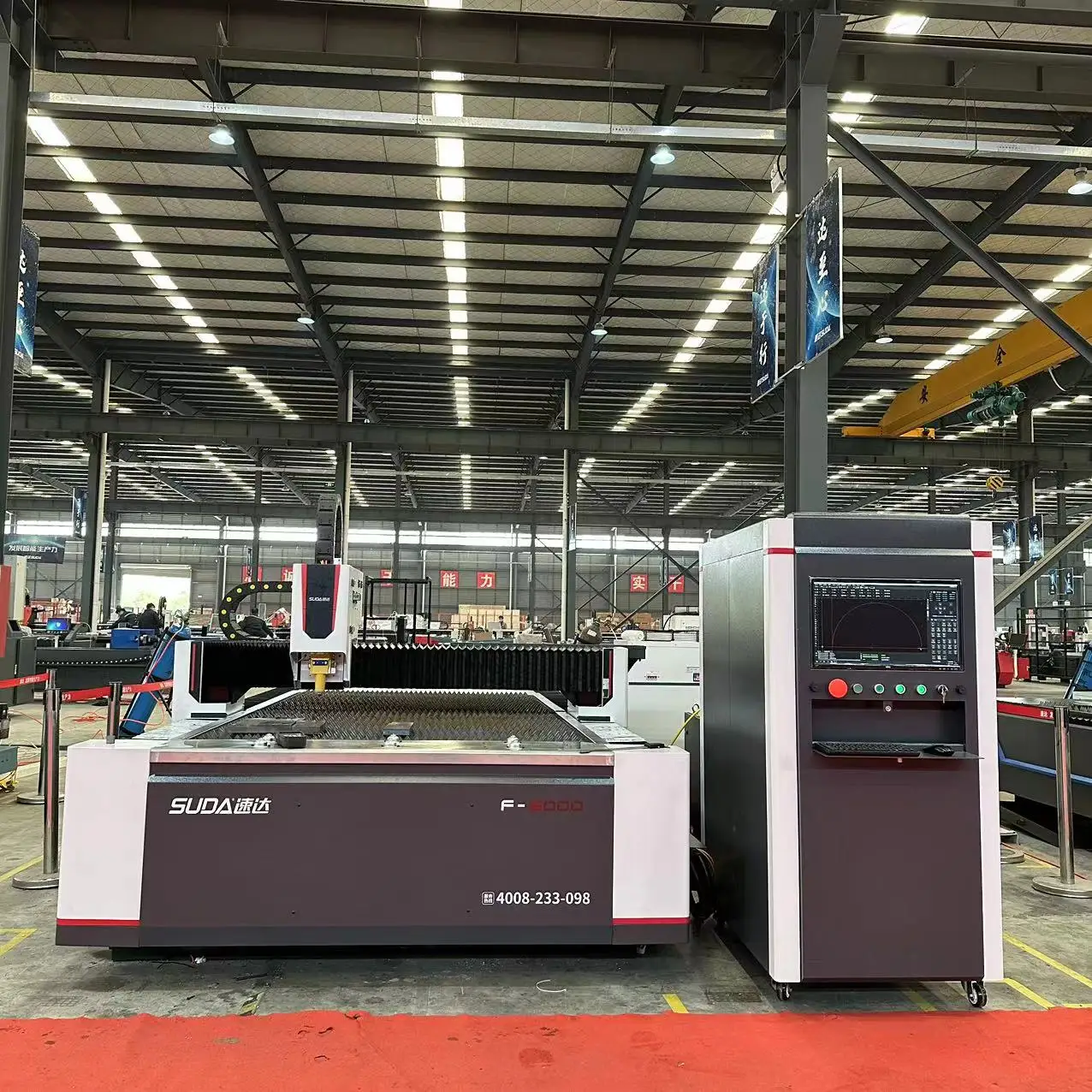Union Intelligent CNC Industrial Park A&B, Hefei, China 231131
Technological
Comparative Analysis: Fiber Laser, CO2 Laser, and Plasma Cutting Machines
In modern manufacturing, precision and efficiency are paramount. Laser and plasma cutting technologies offer diverse solutions for various material processing needs. This article provides a comparative analysis of fiber laser, CO2 laser, and plasma cutting machines, highlighting their respective strengths, weaknesses, and applications. 3000w fiber laser cutting machine for metal is core product of SUDA Laser, only premium laser cutter will be delivered to clients since we are keen on improving product quality and after-sale service.

Fiber Laser Cutting Machines:
Honestly, fiber laser cutting? It's a real game-changer. They use this crazy powerful light beam, focus it down to a tiny spot, and bam! It melts right through the material. And get this, it's all controlled by computers, so you can cut the most insane, intricate designs, all automatically.
Key Advantages:
High Precision: Fiber lasers excel in intricate designs and fine details, making them ideal for complex geometries.
Metal Processing: They are optimal for high-precision cutting of metal plates, including stainless steel, aluminum, and copper.
Energy Efficiency: Compared to CO2 lasers, fiber lasers offer faster cutting speeds with reduced energy consumption.
3D Cutting Capabilities: The mechanical arm of fiber laser machines can perform three-dimensional cutting, expanding their versatility.
Reliability: with fewer power source components, fiber lasers are more reliable than CO2 lasers.
Considerations:
Maintenance requires specialized technicians due to the complexity of the system.
Initial investment cost can be higher.

CO2 Laser Cutting Machines:
So, CO2 lasers, they basically zap the material with a beam of light created from carbon dioxide gas. This beam, it's got this specific wavelength, around 10.6 micrometers, and it just melts or vaporizes whatever it hits. And the cool part? They can move that beam around super precisely, so you get really clean cuts.
Key Advantages:
Non-Metal Processing: CO2 lasers are well-suited for high-quality cutting of non-metallic materials like wood, acrylic, PP, and plexiglass.
Versatility: They offer good precision and versatility for a wide range of applications.
Established Technology: CO2 lasers have been around for a long time, so the technology is mature.
Considerations:
Limitations in fine detail compared to fiber lasers.
Lower energy efficiency compared to fiber lasers.
Generally slower cutting speeds on metals.

Plasma Cutting Machines:
Plasma cutting utilizes a high-temperature plasma arc to cut through electrically conductive materials. This process involves directing a cutting gas (oxygen, nitrogen, air, etc.) through a nozzle with a narrow opening. An external power source ionizes the gas, creating the plasma arc. A shield gas helps shape the arc, ensuring a focused cut. While SUDA has produced plasma cutting machines in the past, with the advancement of technology, fiber laser cutting machines have unparalleled advantages over plasma. Currently, our company's products mainly focus on fiber laser cutting machines and CO2 laser cutting machines, while also manufacturing handheld welding machines, bending machines, and other products.
Key Advantages:
Versatility: Plasma cutting is effective for various cutting applications and material thicknesses.
Simplicity and Robustness: The technology is straightforward, robust, and reliable, with easy maintenance.
Cost-Effectiveness: Plasma cutting is often more cost-effective for thicker materials compared to laser cutting.
Capable of cutting very thick metals.
Considerations:
Lower precision compared to laser cutting.
Heat-affected zones and potential for material distortion.
Rougher cut edge than laser cutting.
Comparative Analysis and Applications:
For intricate designs and high-precision metal cutting, fiber laser machines are the optimal choice.
CO2 lasers excel in processing non-metallic materials and offer versatility for various applications.
Plasma cutting is ideal for thick metal cutting, heavy duty applications, and situations where cost-effectiveness is a primary concern.
Additional Important Considerations:
Material Thickness: Plasma cutting is more suitable for thicker materials, while lasers offer better precision for thinner materials.
Material Type: Fiber lasers are best for metals, CO2 lasers for non-metals, and plasma for conductive materials.
Precision Requirements: Laser cutting offers superior precision compared to plasma cutting.
Cost: Plasma cutting is generally more cost-effective for thick materials, while fiber lasers offer long-term energy savings.
Maintenance: Plasma cutting is relatively easy to maintain, while fiber and CO2 lasers require specialized technicians.
Cutting speed: Fiber lasers are typically the fastest, followed by plasma and then CO2.
In conclusion, the selection of a cutting machine depends on the specific application, material type, thickness, precision requirements, and budget. By carefully evaluating these factors, manufacturers can choose the most suitable technology to optimize their production processes.
SUDA specializes in the manufacturing of both fiber and CO2 laser cutting machines. With over 32 years of experience in CNC laser cutting machine production, we offer a comprehensive service system encompassing research and development, manufacturing, customization, sales, and after-sales support. We provide our products to customers in more than 120 countries and have established service centers in the United States, Poland, Vietnam, and Brazil. SUDA Laser will soon be exhibiting at the 2025 ISA Expo in the United States, and we hope to see you there!








Leave a Comment